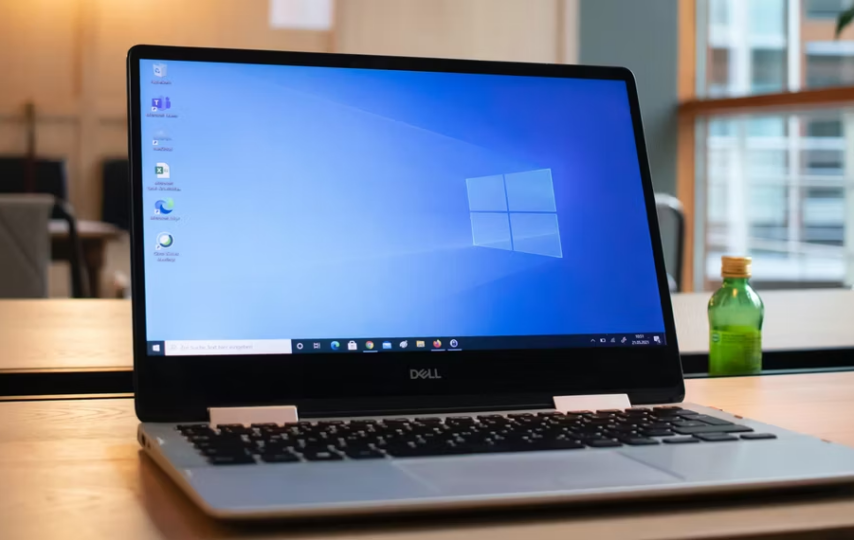In today’s interconnected world, accessing shared files and network resources is crucial for productivity. However, when encountering the ‘The Local Device Name is Already in Use’ error, your seamless workflow can come to a halt. This error also prevents you from mapping a network drive or accessing a shared folder, causing frustration and delays.
Fortunately, there are effective solutions to resolve this error and regain seamless access to your network resources.
Understanding the ‘The Local Device Name is Already in Use’ Error
The ‘The Local Device Name…’ error occurs when you attempt to map a network drive using a letter that is already assigned to an existing network connection. Note that Windows identifies each network resource with a unique drive letter. Note that resolving this conflict is essential to regain access to your desired network resource.
Common Causes of the Error
Before diving into the solutions, it’s important to understand the underlying causes of the ‘The Local Device Name…’ error. By identifying the root causes, you can also implement the appropriate fix and prevent future occurrences of the error. Note that some common causes include:
Existing network connections use the same drive letter.
Persistent network mappings from previous sessions.
Incorrect network configuration.
Issues with network drivers.
Interference from antivirus or firewall software.
Most Effective Ways to Fix ‘The Local Device Name is Already in Use’ Error
Here are several effective solutions that can help you resolve the ‘The Local Device Name…’ error on your Windows system:
Check for Existing Network Connections
Note that the first step is to check for any existing network connections that might be using the drive letter you want to assign.
Press Win + R.
Type cmd, then press Enter.
You have successfully launched the command Prompt window. Now, insert the command net use, then press Enter.
Check if there are entries that have the same drive letter as the one you want to assign.
If you find any conflicting connections, then use the command net use /delete [drive letter] to remove them.
Disconnect, then Reconnect Network Drives
Sometimes, disconnecting and then reconnecting the network drives can resolve the error.
Open File Explorer.
Click on This PC or My Computer.
Right-click on the network drive that is causing the error.
Select Disconnect from the menu.
Once disconnected, right-click again and select Map network drive.
Assign a different drive letter, then follow the on-screen instructions to reconnect the drive.
Release and Renew IP Configuration
Releasing and renewing the IP configuration can also help resolve network-related conflicts.
Press Win + R.
Type cmd, then press Enter.
You have successfully launched the Command Prompt window. Please enter the following commands individually, then press the ‘Enter’ key after each command.
ipconfig /release
ipconfig /renew
Change Network Drive Letter
Changing the drive letter for the network connection can also resolve the conflict.
Open File Explorer.
Click on This PC or My Computer.
Right-click on the network drive causing the error.
Select Properties from the menu.
In the General tab, click on the Change button next to the drive letter.
Pick a different drive letter, then click OK.
Image credit- makeuseof.com
Please verify the modifications, then proceed to close the Properties window.
Disable Fast User Switching
Disabling the Fast User Switching feature has also proven effective in resolving the error for some users.
Press Win + R.
Type regedit, then press Enter.
Locate: HKEY_LOCAL_MACHINE\SOFTWARE\Microsoft\Windows\CurrentVersion\Policies\System
In the right pane, locate the entry HideFastUserSwitching.
Double-click on it, then change the value to 1 to disable Fast User Switching.
Please verify the modifications, then proceed to close the Registry Editor.
Restart Network-Related Services
Restarting network-related services can help resolve temporary glitches and conflicts. Follow these steps:
Press Win + R.
Type services.msc, then press Enter.
Scroll down and locate the following services:
Workstation
Network Connections
TCP/IP NetBIOS Helper
Right-click on each of them individually, then opt for Restart.
Close the Services window.
Update Network Drivers
Outdated or incompatible network drivers can cause various network-related errors, including the one we’re trying to fix.
Right-click on the Start icon, then opt for Device Manager.
Expand the Network adapters category.
Perform a right-click on your network adapter and choose the option ‘Update driver’.
Choose the option to Search automatically for updated driver software.
Windows will automatically search for the latest drivers, then install them.
Restart your computer after the completion of the driver update process.
Turn Off the Antivirus for a Brief Period
Sometimes, antivirus or firewall software can interfere with network connections, causing the error. Temporarily disabling them can help determine if they are the root cause. Follow the instructions specific to your antivirus or firewall software to disable them temporarily. Remember to re-enable them after troubleshooting.
Reset TCP/IP Stack
Resetting the TCP/IP stack can fix network-related issues, including the error we’re addressing.
Press Win + R.
Type cmd and press Enter.
Within the Command Prompt window, input the provided command and press Enter.
netsh int ip reset
Modify Registry Settings
Modifying certain registry settings can help resolve the error. However, it’s crucial to exercise caution while making changes to the registry. Follow these steps:
Press Win + R.
Type regedit and press Enter.
Locate: HKEY_LOCAL_MACHINE\SYSTEM\CurrentControlSet\Control\NetworkProvider\Order
In the right pane, double-click on the ProviderOrder entry.
Delete any entries other than RDPNP and LanmanWorkstation.
Verify the modifications and proceed to close the Registry Editor.
Conclusion
Remember, resolving the ‘The Local Device Name is Already in Use’ error requires systematic troubleshooting and patience. By implementing the solutions provided, you can overcome this error and regain uninterrupted access to your network resources.
FAQ
Q1. Can I encounter the ‘The Local Device Name…’error on Windows 10?
Yes, the ‘The Local Device Name…’ error can occur on various versions of the Windows operating system, including Windows 10.
Q2. Why am I unable to map a network drive or access a shared folder?
The ‘The Local Device Name…’ error typically occurs when there is a conflict between the drive letter you want to assign and an existing network connection.







